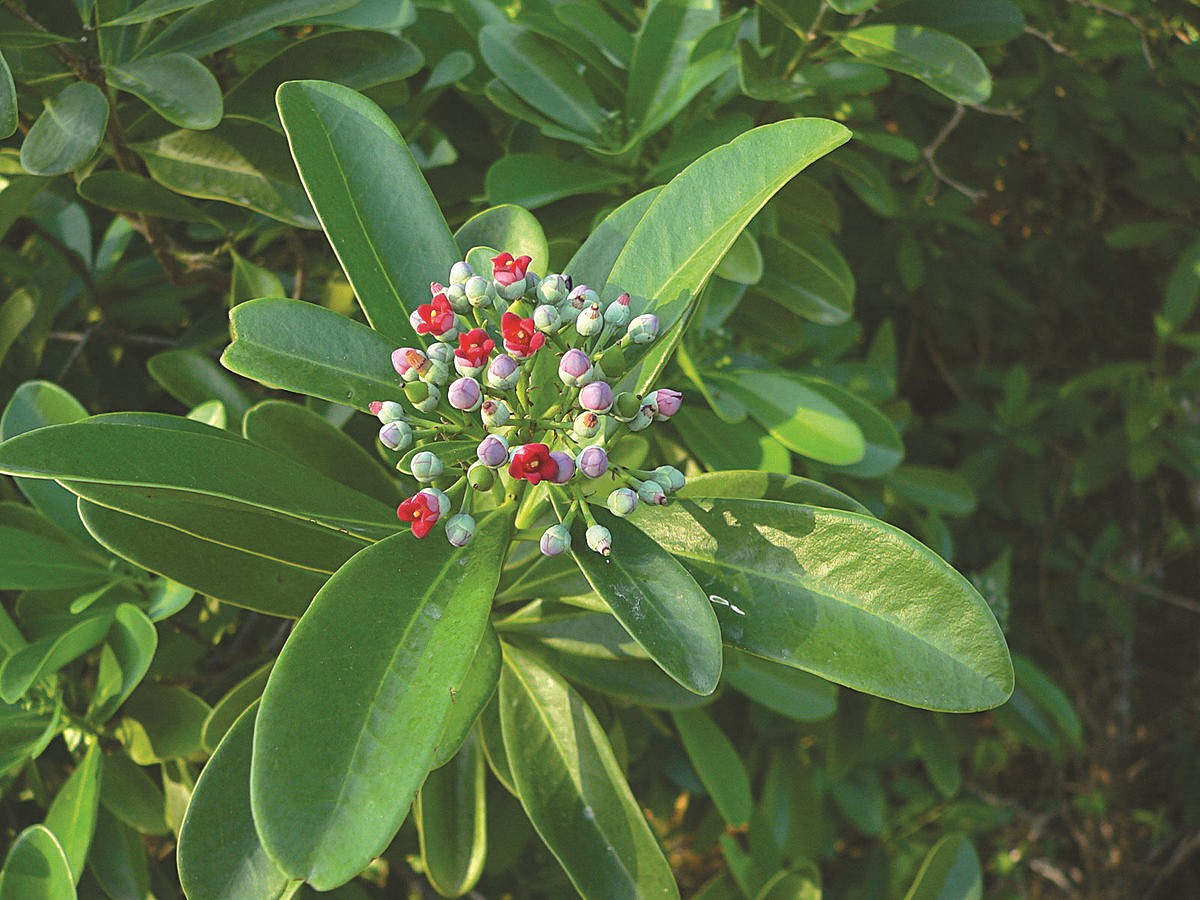

Scientists have long studied links between the sense of smell and its ability to trigger memories. Of the five senses, smell seems to present the strongest link to the brain’s anatomy, causing feelings of nostalgia and allowing us to sometimes remember a specific time and place related to a certain fragrance.
Although pepper cinnamon, or Canella winterana, is not the commercial species used for cinnamon production, it has a very similar fragrance and the capacity to trigger memories like that of having tea with family and friends, or of cinnamon sprinkled on breakfast toast to start the day.
The cinnamon that is famed for being a part of the historic and important spice trade belongs to the family Lauraceae, whereas pepper cinnamon — which is also known as wild cinnamon —belongs to the family Canellaceae. Another major difference is in their origin. While commercial cinnamon is native to Sri Lanka and Indonesia, pepper cinnamon is native to the West Indies, Florida and northern South America.
Pepper cinnamon is a very slow-growing evergreen shrub or small tree, often used as a specimen plant or for screening/hedging purposes. It prefers full sun to part shade and in its native habitat, pepper cinnamon can be found growing in wooded thickets and coastal hammocks.
Reaching heights of 45 to 50 feet, with a canopy spread of 15 feet, it is important to give pepper cinnamon plenty of room to grow. Like many plants in the Caribbean, it grows best in well-drained limestone/calcareous soils.
Among pepper cinnamon’s most exquisite features are its flowers and fruit. In some climates, where the soil conditions and sunlight are just right, it will flower year-round. In most instances though, the purplish-red flowers begin to appear mid- to late summer and last through the fall months. They appear as a cluster, or corymb, that is slightly fragrant, and are an important nectar plant for butterflies. Pollinated mostly by bees, the fruits begin to appear at the end of the year and last for a month or two. The berries are enjoyed mostly by birds, which also help in propagating their populations.
Critically endangered, pepper cinnamon is an underused ornamental that is generally resistant to pests and diseases.
In Camana Bay, Canella winterana can be found at the Market Street entrance to the courtyard behind the Visitor Centre, fittingly named Canella Court.
This article originally appeared in the December 2020 print edition of Camana Bay Times with the headline "Pepper Cinnamon."

About the author
Shannon Schmidt is the Horticulture Manager at Dart’s Arboretum Services Ltd. Joining Dart in 2012, Shannon previously worked in parks, public gardens and tourism properties, among others. Originally from the Finger Lakes region of New York State, Shannon loves island life, spending time paddleboarding around the canals and mangroves, in the sea, and spending time outdoors with her two energetic Boston Terriers Nollie and Ebbie and her equally energetic partner Chase! Shannon holds a Bachelor of Science in Recreation, Park and Tourism Management from The Pennsylvania State University and a Diploma in Horticulture from the Longwood Gardens Professional School of Horticulture, and loves spending time swinging in a hammock, with her favourite smoothie from Jessie’s Juice Bar and reading material from Books & Books.